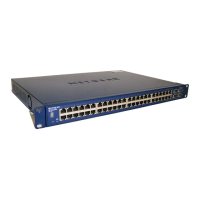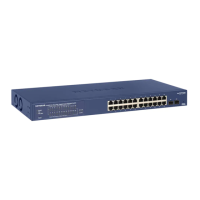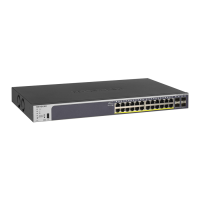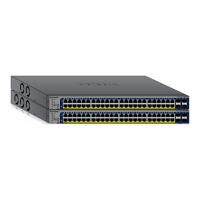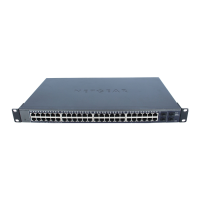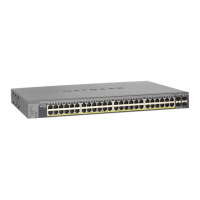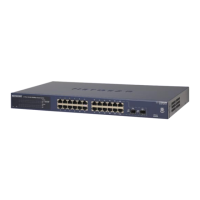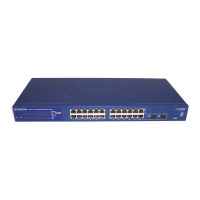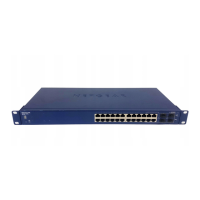176
GS716T and GS724T Gigabit Smart Switches
To configure global RADIUS server settings:
1. In the Max Number of Retransmits field, specify the value of the maximum number of
times a request packet is retransmitted to the RADIUS server.
Consideration to maximum delay time should be given when configuring RADIUS max
retransmit and RADIUS timeout. If multiple RADIUS servers are configured, the max
retransmit value on each will be exhausted before the next server is attempted. A
retransmit will not occur until the configured timeout value on that server has passed
without a response from the RADIUS server. Therefore, the maximum delay in receiving
a response from the RADIUS application equals the sum of (retransmit times timeout) for
all configured servers. If the RADIUS request was generated by a user login attempt, all
user interfaces will be blocked until the RADIUS application returns a response.
2. In the Timeout Duration field, specify the timeout value, in seconds, for request
retransmissions.
Consideration to maximum delay time should be given when configuring RADIUS max
retransmit and RADIUS timeout. If multiple RADIUS servers are configured, the max
retransmit value on each will be exhausted before the next server is attempted. A
retransmit will not occur until the configured timeout value on that server has passed
without a response from the RADIUS server. Therefore, the maximum delay in receiving
a response from the RADIUS application equals the sum of (retransmit times timeout) for
all configured servers. If the RADIUS request was generated by a user login attempt, all
user interfaces will be blocked until the RADIUS application returns a response.
3. From the Accounting Mode menu, select whether the RADIUS accounting mode is
enabled or disabled on the current server.
4. Click Cancel to cancel the configuration on the screen and reset the data on the screen to
the latest value of the switch.
5. If you make changes to the page, click Apply to apply the changes to the system.
